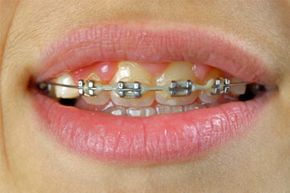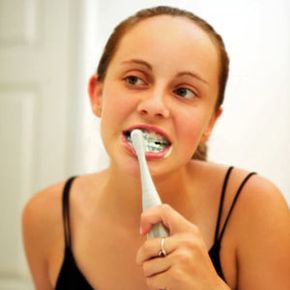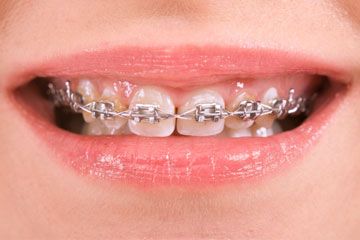Wearing braces is no small sacrifice. It can cost time and comfort. It definitely costs money and often, it cramps our style, self-confidence and vanity, too. Teeth don't look as attractive when they're covered with metal, ceramic or acrylic overlays, whether they're almost "invisible" or designed to match the color of our teeth. And although they come with the hope of beautiful results at the end of many months -- or years -- they can also instill fear that stains are building up underneath or around all of those brackets and wires.
Of course, teeth can be cleaned and polished after all of the hardware comes off, but is it too late then? If you're confined to wearing braces in the first place, is it really too much to ask that the parts of your teeth that aren't covered in metal be white? Well, yes and no.
Advertisement
That's because those braces aren't just making you look better, they're making your mouth easier to clean and care for by spacing your teeth and correcting your bite so food won't collect in crowded spaces as easily, and overlapping teeth will be separated for easier flossing and cleaning on all sides and surfaces. Your teeth will almost always look and feel better after wearing braces and any problems with malocclusion -- a bite that's out of alignment -- will be corrected, too [source: ADA].
Most young people start orthodontic care between 8 and 14 years old, and anybody can expect to wear them for up to three years or more, so why not make the best of it by whitening what you can? [sources: Hirsch; ADA]. Because it's not that simple.
We'll look at some different types of braces and how well they stand up to whitening products, next.
Advertisement




